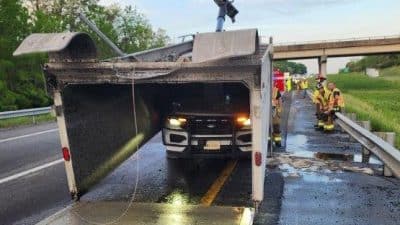
“The Commonwealth of Virginia is one of only four states in the nation that maintains responsibility for the vast majority of its secondary roads,” said Secretary Connaughton. “Virginia’s 97,629 lane miles of secondary roads are vital to the Commonwealth’s economic prosperity and our citizens’ quality of life. This study looks at every option to adequately address future secondary road system needs.”
The study identifies 10 findings related to the secondary roads program:
- The secondary road system as currently configured is not an appropriate administrative apparatus for maintenance and operations of the roads it contains;
- The condition of the secondary system is deteriorating;
- In recent years the VDOT secondary construction program has provided minimal funding support for constructing new roads in the secondary system;
- The current budget allocation process for maintenance funds gives relatively low priority to the secondary system;
- The current “devolution mechanisms” for construction and maintenance are not attracting county participation;
- County officials generally agree that state payments will not cover all the costs of a local road program for maintaining secondary roads;
- Many counties have limited capacity to assume secondary maintenance responsibilities;
- Local control over local roads and streets affords significant opportunity to integrate decision making over transportation and land use and improve development outcomes;
- Local option transportation taxes have been used throughout the U.S. to generate revenue for local road construction and maintenance programs; and
- Current secondary road acceptance procedures have and may continue to add roads to the secondary system in ways that exacerbate the maintenance budget shortfall.
Secretary Connaughton continued, “Our secondary road program is facing an enormous array of challenges. VDOT’s current resources are sufficient to do a few missions well or many missions inadequately. This report provides an excellent overview of the choices ahead.”
Several policy options are discussed in the report, including:
- Maintaining the current policy on construction and maintenance devolution;
- Maintaining the current policy with enhanced budgetary priority for secondary road construction and maintenance;
- Restructuring the secondary road system;
- Performance-based maintenance contracting on the secondary system;
- Empowering counties to raise revenues;
- Imposing devolution on all counties; and
- Imposing devolution on select urban counties.
“The Commonwealth of Virginia is currently in a unique position,” said Dr. Gifford. “While decreases in available funding and statutorily mandated prioritizations have led to deteriorating secondary roads, Virginia has a number of viable options to consider in solving these challenges.”
A link to the study is provided here: http://papers.ssrn.com/sol3/papers.cfm?abstract_id=1865957.










